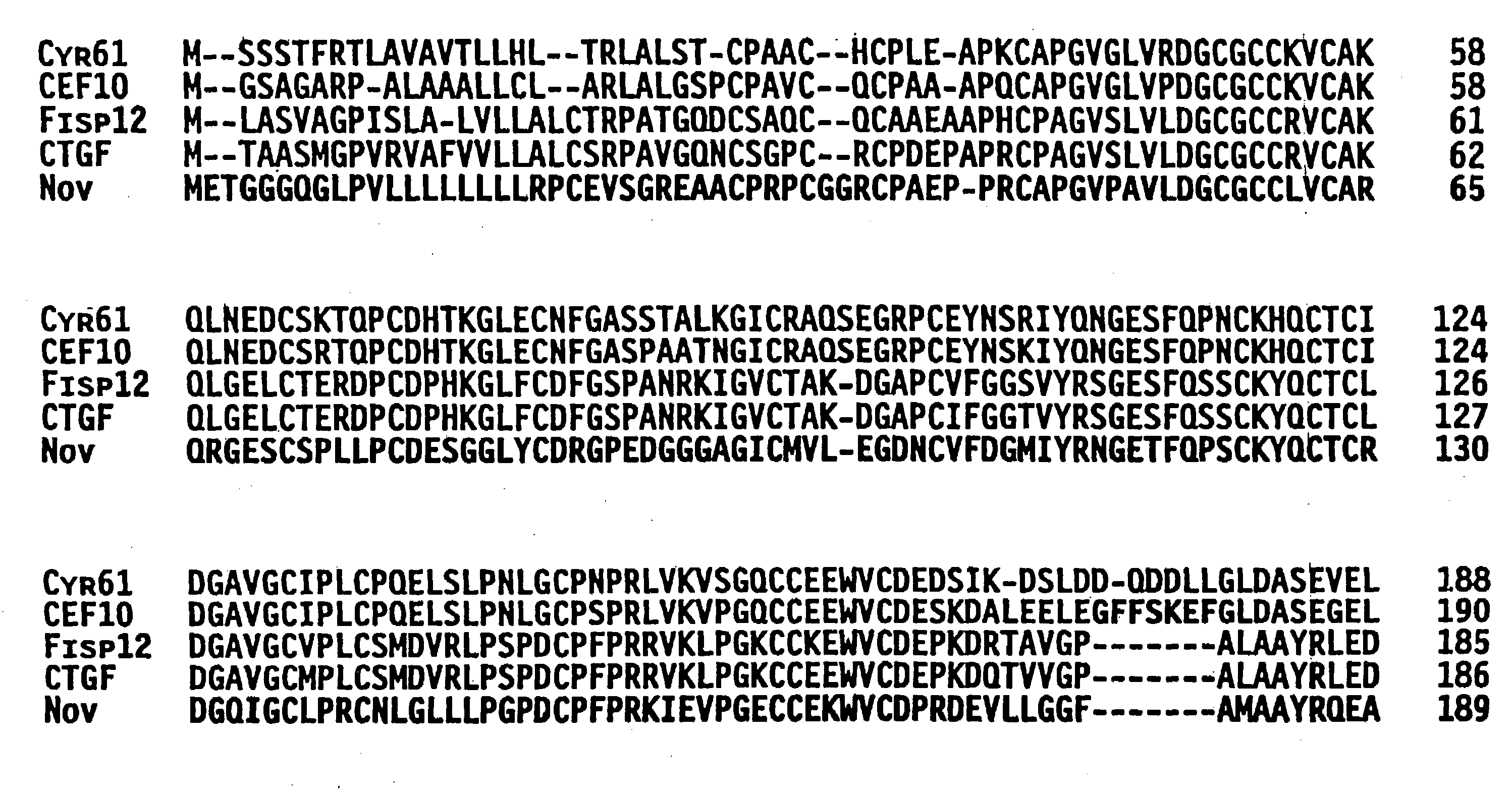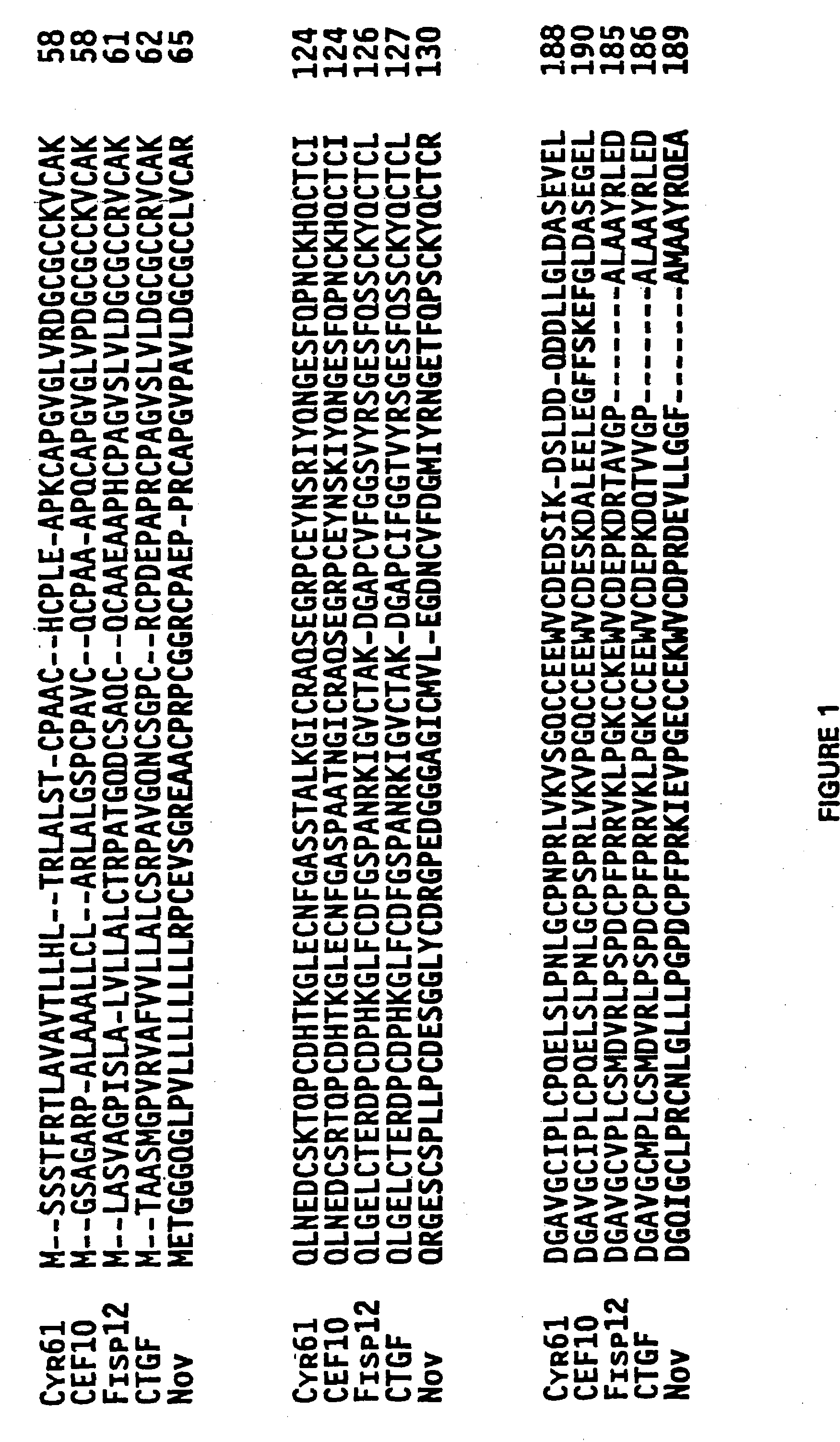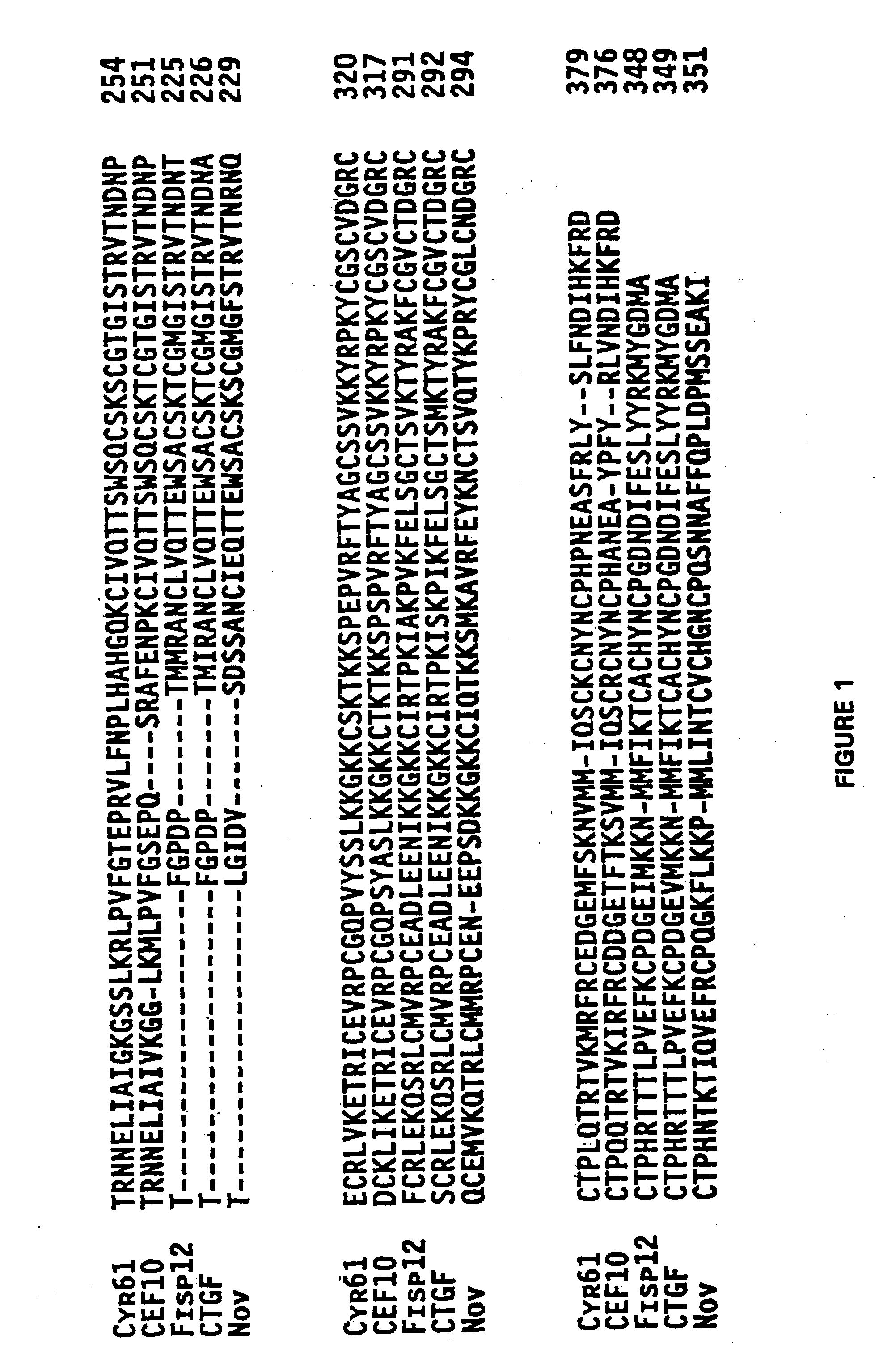Cyr61 compositions and methods
a composition and composition technology, applied in the field of cyr61 compositions and methods, can solve the problems of skeletal defects presenting problems, uncontrolled growth, and impairing the quality of life of afflicted individuals, and achieve the effects of improving tissue grafting, improving neovascularization rate of grafts, and increasing growth
- Summary
- Abstract
- Description
- Claims
- Application Information
AI Technical Summary
Benefits of technology
Problems solved by technology
Method used
Image
Examples
example 1
[0057]Initially, an attempt was made to isolate a human cyr61 cDNA from a human placental cDNA library by probing with the murine cyr61 cDNA sequence using techniques that are standard in the art. See Sambrook et al., incorporated herein by reference. Isolation of the complete murine cyr61 cDNA from a BALB / c 3T3 (ATCC CRL-1658) cDNA library has been described. O'Brien et al., Mol. Cell. Biol. 10:3569-3577 (1990), incorporated herein by reference. The nucleotide and deduced amino acid sequences of murine cyr61 are available from the Genbank database under accession number M32490. The nucleotide sequence of murine cyr61 is presented in SEQ ID NO:1; the murine Cyr61 amino acid sequence is presented in SEQ ID NO:2.
[0058]The human cDNA library was constructed using λgt11 (Promega Corp., Madison, Wis.) as a vector which was transfected into E. coli and plated on LB agar. A murine cDNA expression construct cloned in pGEM-2 (O'Brien et al, [1990]), containing the entir...
example 2
Sequence Analyses
[0074]The nucleotide sequence of murne cyr61 has been described, O'Brien et al (1990); Latinkic et al., Nucl. Acids Res. 19:3261-3267 (1991), and is set out herein as SEQ ID NO: 1.
[0075]The deduced amino acid sequence of murine Cyr61 has been reported, O'Brien et al (1990), and is set forth in SEQ ID NO:2.
[0076]The nucleotide sequence of the human cyr61 cDNA was determined using the method of Sanger, as described in Sambrook et al. Sequencing templates were generated by constructing a series of nested deletions from a pGEM-2 human cyr61 cDNA clone, as described in Example 1 above. The human cyr61 cDNA sequence is set forth in SEQ ID NO:3. The amino acid sequence of human Cyr61 was deduced from the human cyr61 cDNA sequence and is set forth in SEQ ID NO:4.
[0077]A comparison of the mouse and human Cyr61 sequences, presented in SEQ ID NO:2 and SEQ ID NO:4, respectively, reveals 91% similarity. Both sequences exhibit an N-terminal signal sequence indicative of a process...
example 3
RNA Analyses
[0080]Polynucleotide probes are useful diagnostic tools for angiogenic, and other, disorders correlated with Cyr61 expression because properly designed probes can reveal the location, and level, of cyr61 gene expression at the transcriptional level. The expression of cyr61, in turn, indicates whether or not genes controlling the process of angiogenesis are being expressed at typical, or expected, levels.
[0081]Using these tools, the mouse cyr61 mRNA expression pattern was determined using an RNase protection technique. O'Brien et al., (1992). In particular, a 289 nucleotide antisense riboprobe was used that would protect 246 nucleotides of the murine cyr61 mRNA (nucleotides 67 to 313 using the numbering of O'Brien et al) The assays showed levels of cyr61 mRNA in PSA-1 cells (10 μg of total RNA) from either the undifferentiated state or stages 1, 2, and 3 of differentiation (PSA-1 cells undergo three stages of cellular differentiation corresponding to mouse embryonic cells...
PUM
| Property | Measurement | Unit |
|---|---|---|
| temperature | aaaaa | aaaaa |
| pH | aaaaa | aaaaa |
| pH | aaaaa | aaaaa |
Abstract
Description
Claims
Application Information
 Login to View More
Login to View More - R&D
- Intellectual Property
- Life Sciences
- Materials
- Tech Scout
- Unparalleled Data Quality
- Higher Quality Content
- 60% Fewer Hallucinations
Browse by: Latest US Patents, China's latest patents, Technical Efficacy Thesaurus, Application Domain, Technology Topic, Popular Technical Reports.
© 2025 PatSnap. All rights reserved.Legal|Privacy policy|Modern Slavery Act Transparency Statement|Sitemap|About US| Contact US: help@patsnap.com



